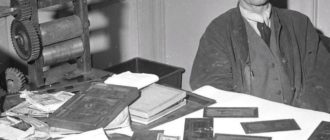
The Order of Leopold is one of the highest awards in Austria, established by Emperor Franz II at the beginning of the 19th century. Although the regalia existed for just over a hundred years, it is treated with great respect at home and is revered as a historical relic. The Order of Leopold was awarded not only to military personnel and high dignitaries of the state, but also to clergymen, scientists and writers.

History
The Order of Leopold is an award associated with a beautiful legend about the unsuccessful family life of Emperor Franz II. The monarch ascended the throne in 1792, already being married a second marriage – his first wife Elizabeth Wilhelmina died without leaving any offspring.
Family life with his second wife Maria Theresa of Sicily developed happily – almost every year brought the emperor a new heir, and the idyll was overshadowed only by failures in foreign policy. Under pressure from Napoleon Bonaparte’s army, Austria lost the Netherlands and Lombardy, and in 1805 suffered a crushing defeat at Austerlitz.

The Emperor established the Order of Leopold on January 8, 1808, and this date was preceded by a series of sad events. A year earlier, Franz’s wife had died of premature birth. The monarch was inconsolable, but the position of the suzerain required a new marriage alliance as soon as possible. The young princess of Modena, Maria Ludovika Beatrix von Modena, became the chosen one of the emperor. On the day of the engagement, the emperor decided to announce the creation of the Order of Leopold in the hope of enlisting the support of higher powers.
However, historians believe that the reason for the appearance of the regalia was much more prosaic. During the Napoleonic wars, the number of exploits that needed encouragement increased sharply. By that time, there were only two awards in the empire, and they were clearly not enough. Franz was offered several variants of names, and he decided to name the order in honor of his father Leopold I (Leopold I). The engagement was just an excuse to announce the event.

Description of the Order of Leopold
The award set of the Imperial Austrian Order of Leopold included the badge itself, a chain of wreaths, crowns and monograms, a star to be worn on the chest and a moire sling.
The award initially had three ranks:
- Grand Cross (after 1901 the Cross of the 1st degree was added);
- Commander;
- Knight.
The symbol of the regalia is the octagonal cross, which has been used in the award systems of Europe since the heyday of the Templars. In the center of the medallion there are intertwined letters (the initials of the emperor), and on the frame is the inscription: “For devotion and merit.” A miniature crown badge with ribbons fluttering along the sides served as hanging on the ribbon. The military was presented with an insignia with a laurel half-wreath covered with enamel or gilding.

Depending on the rank of the award, it could be made entirely of gold or with the addition of oxidized silver. On special occasions, the emperor gave orders to add diamonds to the decoration. Knights wore regalia on the left side of the chest, generals – on a neck ribbon. The ceremonial attire included a massive chain of 15-16 links.

The main characteristics of the Order of Leopold:
- Date of establishment: January 8, 1808;
- Number of degrees: 4;
- Sign size: 48-50 mm;
- Stars size: 80-105mm;
- Diameter of the mark of the 1st degree: about 40 mm;
- Knight’s cross: 27-31 mm;
- Materials: gold, oxidized silver, sometimes diamonds.

Cavaliers of the Order of Leopold By statute, the award was presented not only for feats on the battlefield, but also for outstanding achievements in the field of science and art. The first cavaliers were the brothers of the emperor Johann Leopold and Rainer Karl, at the same time eleven confidants of the monarch were awarded the insignia.
Priest and theologian Anton Josef Kardinal Gruscha received the honor as a cardinal and prelate of the order. The regalia marks the literary merits of the German poet Johann Wolfgang von Goethe.

Together with the order, the cavaliers received a certificate of award – a book or a parchment patent. The head of the order was the emperor himself, and the positions of chancellor, prelate and herald were received by eminent dignitaries. Franz called all those honored with the highest honor “cousins.” The order ceased to exist in 1918 after the abolition of the monarchy. In 2008, an exhibition dedicated to the bicentennial of the establishment of the regalia took place at the Archeo Noriko castle-museum in Deutschlandsberg.






